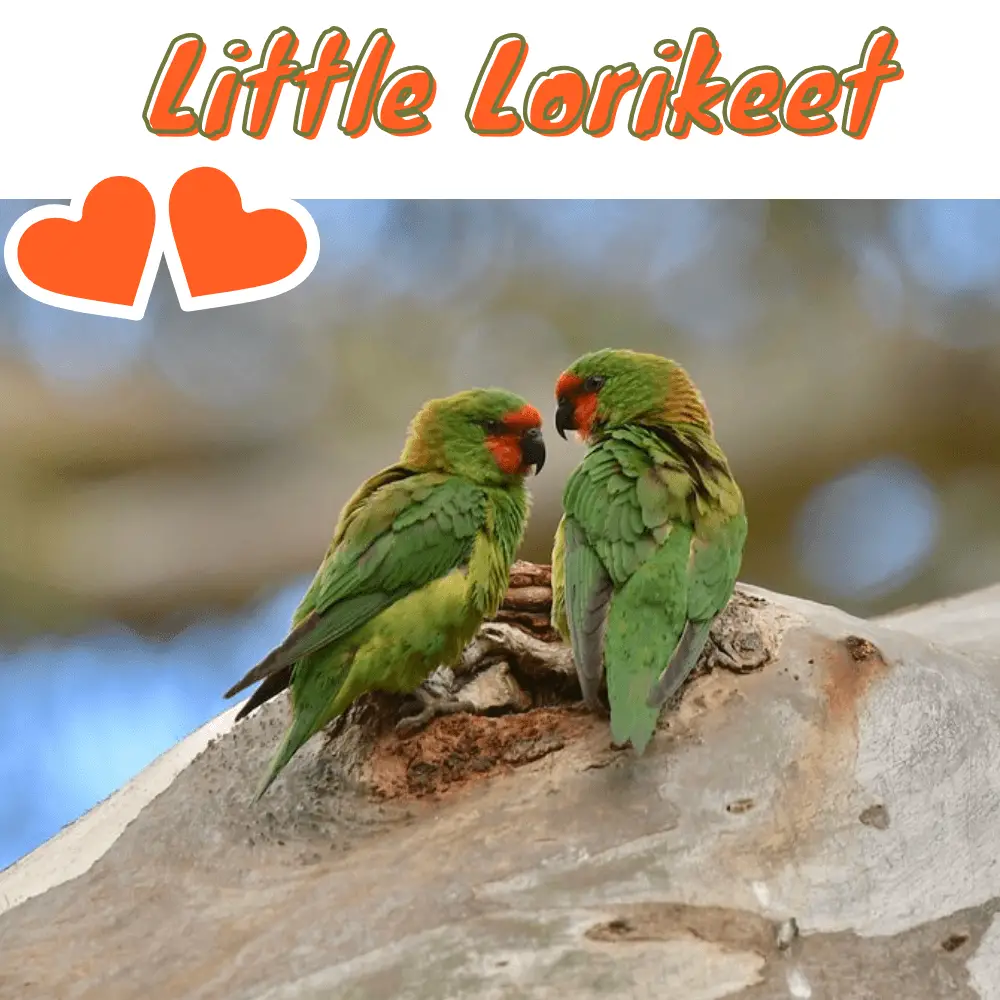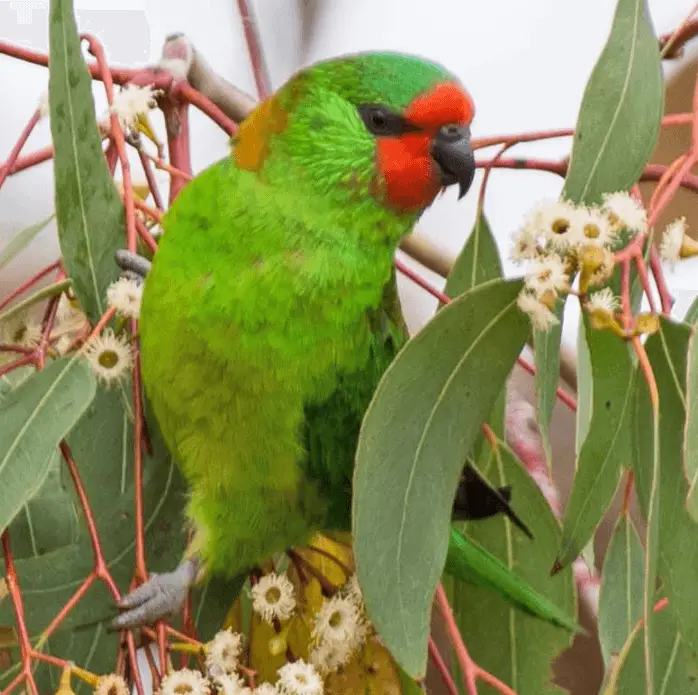
Little Lorikeet 15 cm; 34–53 g. Generally green, more yellowish below; black bill; front of head around the bill, from forehead through the eye to chin, red;
pale green streaking on-ear-coverts; light bronze tinge to nape and mantle; tail below red basally, shading to yellow with grey tips. Immature has a duller red face.
Forms a species pair with G. porphyrocephala. Monotypic.
Subspecies
Monotypic.
Distribution
E & SE Australia; irregular in South Australia except in extreme SE, and vagrant in Tasmania.
Habitat
Canopy of trees in open wooded country, particularly in riparian stands of E. camaldulensis and associated box-ironbark forests, but possibly also in denser forest, were less easily detected; occurs at all altitudes within range.
Movement
Nomadic, following flowering events in different areas.
Diet and Foraging

Pollen, nectar, blossoms of Eucalyptus (in winter E. sideroxylon and E. leucoxylon), Melaleuca and Xanthorrhoea trees, flowers, and juice of mistletoe Amyema cambagei and A. gaudichaudi, berries of Loranthus and fruit of Eriobotrya japonica; birds visit orchards but are not serious pests.
Little Lorikeet Call
little lorikeet call is a high-pitched lisping “tslit!”, significantly higher-pitched than that of G. concinna. When perched, the repertoire is slightly more extensive with several similar-sounding notes covering a wider frequency range, often given as a continuous twittering.
Up close with lovely Little Lorikeets – Capertee Valley
SOURCE: BIBY TV
Breeding
Jun–Jan, as early as May in N. Nest in hollow limb or hole in a tree, usually a living eucalypt near water, 7–12 m up. little lorikeet Eggs 3–5; in captivity, incubation lasts 22 days, nestling period c. 6 weeks.
Conservation Status
Not globally threatened. CITES II. Common to abundant in the center of range in S Queensland and New South Wales, becoming moderately common to uncommon at the extremities.
Of several records from Tasmania, only one involved positive identification, and there is no recent evidence.
SOURCE: OzBirdZ




















